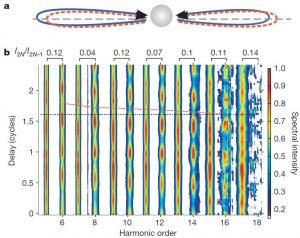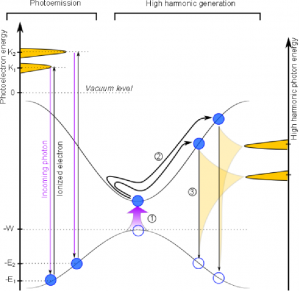Extreme Nonlinear Optics in Solids


When intense light interacts with an atomic gas, recollision between an ionizing electron and its parent ion creates high-order harmonics of the fundamental laser frequency. This sub-cycle effect generates coherent soft X-rays and attosecond pulses and provides a means to image molecular orbitals. We generate high harmonics from bulk ZnO (a direct band gap semiconductor) and Si (an indirect band gap semiconductor) crystals and demonstrate their origin in a generalized recollision between electrons and their associated holes [1-3]. In addition, we find that solid state high harmonics are perturbed by fields so weak that they are present in conventional electronic circuits, thus opening a route to integrate electronics with attosecond and high-harmonic technology [4]. Finally, we devise a technique that extracts the solid’s band structure from the high harmonic signal [5]. This all-optical technique will be applicable to study matter under extreme conditions, surface reactions at ambient pressures and ultrafast modifications to band structures.
[1] Vampa, G., et al. Nature 522.7557 (2015): 462-464.[2] Vampa, G., et al. PRL 113.7 (2014): 073901.
[3] Vampa, G., et al. PRB 91.6 (2015): 064302.
[4] Vampa, G., et al. Nature Photonics 12.8 (2018): 465-468.
[5] Vampa, G., et al. PRL 115.19 (2015): 193603.
